
Along with the new LUMIX S1H and the L Mount 1.4x and 2x teleconverters, Panasonic has also officially announced the Leica DG Vario-Summilux 10-25mm F1.7 ASPH M 4/3 lens.
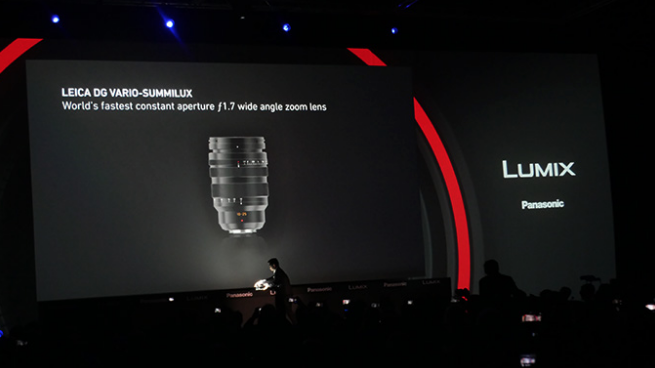
This lens was first teased back in September last year when Panasonic announced that they were developing the first interchangeable lens to be introduced to the market featuring a full-range F1.7 high-speed aperture.
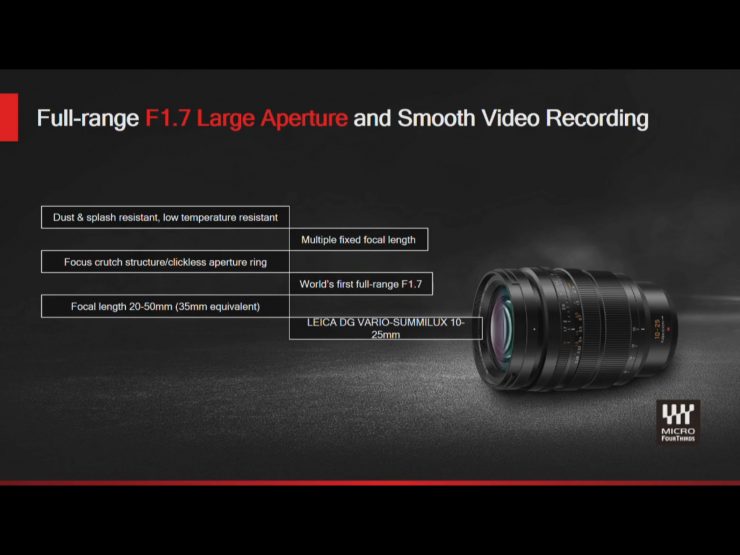
“This new lens demonstrates Panasonic’s commitment to further innovation for the G Series. Videographers will appreciate the versatility the 10-25mm range provides, allowing them to move from an ultra-wide to medium focal length quickly without changing lenses. Such a wide range delivers the equivalent of 4 prime lenses in their kit.”
Scott Mellish, Product Marketing Manager, Imaging, Panasonic
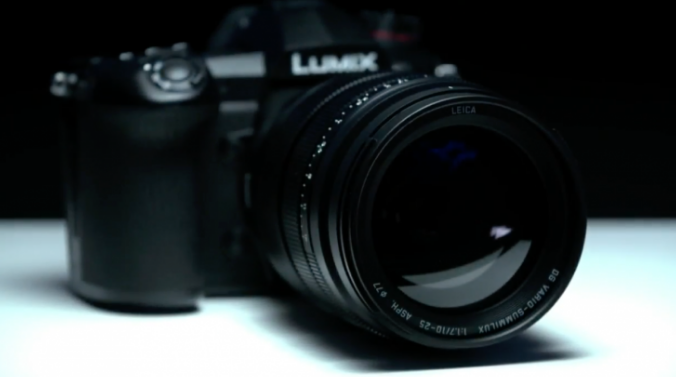
The lens is aimed as a perfect compliment for photo/video shooters. Much like Sigma’s 24-35mm F/2, the Leica DG Vario-Summilux 10-25mm F/1.7 is more like a variable prime than a zoom lens. With a 10-25mm ((35mm camera equivalent: 20-50mm) focal range and constant f1.7 aperture, it is sure to find its way onto a lot of M4/3 cameras. While Panasonic has probably made it with the GH5 and GHs in mind, it will be right at home on the BMPCC 4K, although the lens doesn’t feature IS.
Panasonic claims that the lens has exceptionally high optical performance and that it is suitable not only for photography but also for video use.
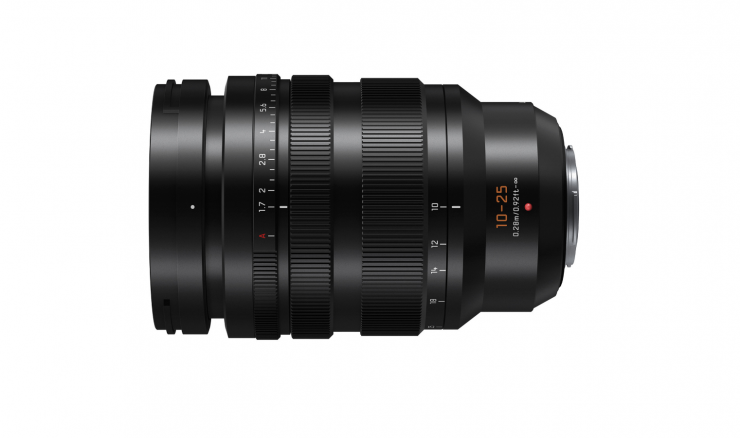
Key features
- Lens construction: 17 elements in 12 groups (3 aspherical lenses, 4 ED lenses, 1 UHR lens)
- Aperture type: 9 diaphragm blades / Circular aperture diaphragm
- Closest focusing distance: 0.28m / 0.92′
- Dust and splash resistant
- Filter size: φ77mm
- Overall length: Approx. 128mm / 5.04″ (from the tip of the lens to the base side of the lens mount)
- Weight: Approx. 690g / 24.34oz (excluding lens cap, lens rear cap and lens hood)
Optical Design
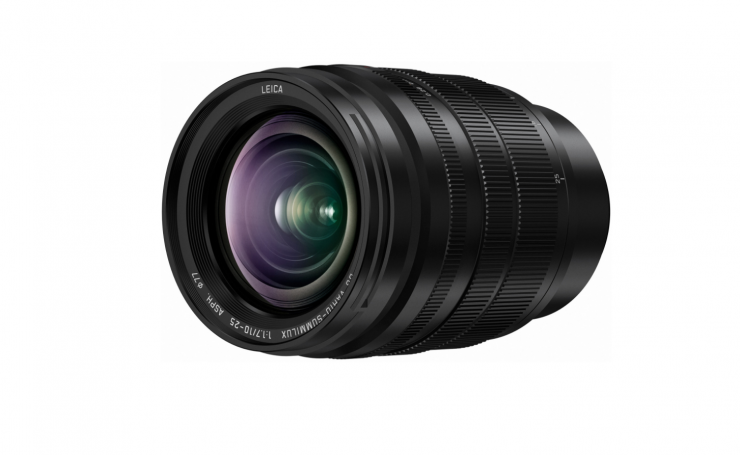
The lens design comprises of 17 elements in 12 groups. It features three aspherical lenses and four ED (Extra-low Dispersion) lenses that are claimed to effectively suppress the axial chromatic aberration and chromatic aberration of magnification. Spherical aberration and distortion are also said to be corrected by the aspherical lenses.
Panasonic says that the use of aspherical lenses and the optimum design of the lens system results in a compact size and lightweight lens that offers outstanding optical performance. They also claim that the optical design achieves exceptional barycentric stability to minimize image shifts during zooming.
Lens Performance
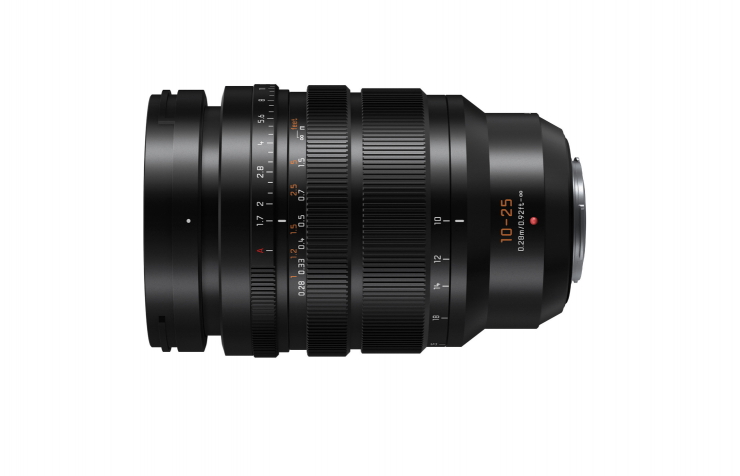
The lens is claimed to offer high-speed, high-precision autofocusing. For video shooters, the lens not only features silent operation that is achieved by the inner focus drive system, but it also has a “de-clicked” aperture ring.
By using a focus clutch mechanism use can quickly change between AF or MF. The lens also uses a mechanism that is claimed to suppresses focus breathing, which is good news for video shooters.
The lens features a 77mm front filter diameter so you will have no problem using a variable ND on the front.
Is M 4/3 going away?
Despite Panasonic now pushing full-frame mirrorless cameras and lenses, they still seem determined to keep the M 4/3 system alive, at least for now. Panasonic has clearly stated that the G series will coexist alongside the S series. There are certainly advantages and disadvantages with both full frame and M4/3 sized sensors, but at least Panasonic is giving you a choice.
Price & Availability
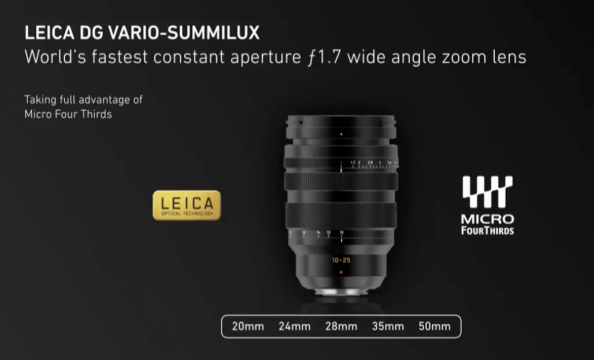
The lens is expected to retail for $1799 USD, which certainly makes it an expensive proposition for M4/3 shooters. The lens is scheduled to start shipping on the 15th of July.
Despite this high price, the lens would appear to be a better option if you are looking for a fast wide angle zoom for your M4/3 camera than say the Olympus M. Zuiko Digital 7-14mm f/2.8 PRO ($1,199 USD), or Panasonic Lumix G X VARIO 12-35mm f/2.8 ($797.99 USD).





